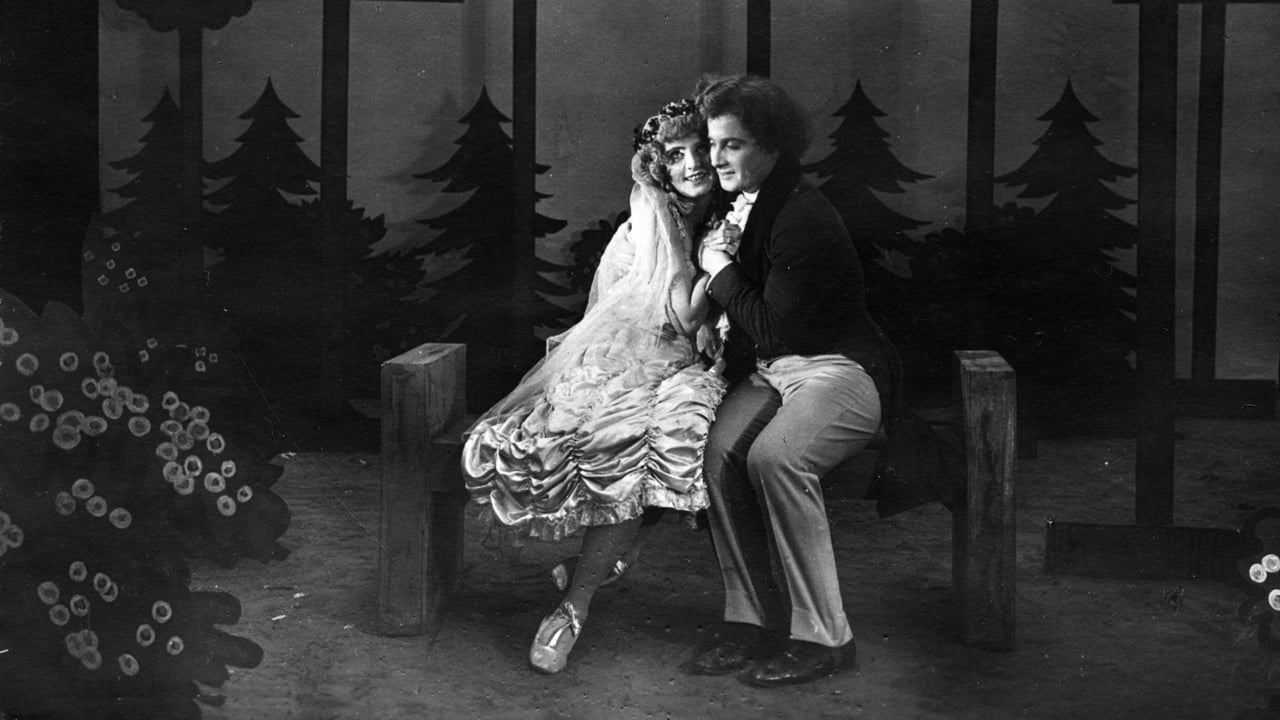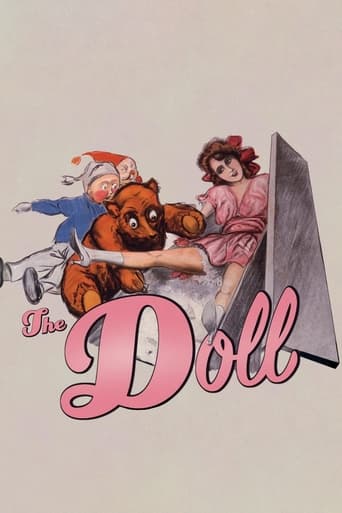CommentsXp
Best movie ever!
TaryBiggBall
It was OK. I don't see why everyone loves it so much. It wasn't very smart or deep or well-directed.
Gurlyndrobb
While it doesn't offer any answers, it both thrills and makes you think.
Stephanie
There is, somehow, an interesting story here, as well as some good acting. There are also some good scenes
Steffi_P
All cinema is artificial, and there is no getting away from this no matter how much of a realist you try to be. And while authenticity and naturalistic performances are a necessity for drama, there are some types of picture in which a deliberate flaunting of artificiality is not only acceptable, it is a positive benefit.By this point in his career, German comedy director Ernst Lubitsch had developed a unique brand of slapstick, the hallmark of which was absurdity and exaggeration. In Lubitsch's world, almost anything can happen, and often does. The stories he dreamed up with his regular collaborator Hanns Kraly were always whimsical and fairy tale-ish, but the Doll is perhaps their most fantastical of all. In it we have a lifelike mechanical doll, and a flesh-and-blood woman pretending to be the doll. Rather than go overboard trying to make this look as convincing as possible, Lubitsch takes things the other way, and stages the whole thing in a phoney and theatrical land, complete with wooden sets, painted backdrops and pantomime horses. In such a setting, the premise of the picture becomes workable.Aside from this, the comic stylings of the early Lubitsch farces were becoming increasingly refined. As usual there are lots of jokes based around ridiculous numbers of people doing the same thing in unison, or the expressions of characters in reaction. Here Lubitsch shows the confidence to have many of these gags play out in long, unbroken takes, with hilarious results, such as the long shot of Lancelot being chased round the town by a huge gang of women, followed by his elderly uncle, followed by a servant with the uncle's medication. Often the careful placement of actors means our attention is drawn to the right spot at the right time, as oppose to overdoing a gag with a jolting cut. An example of this is the uncle's servant's very funny reaction to Lancelot's suggestion that the uncle get married. Lubitsch has the servant to one side of the screen, where it seems natural for him to be, but closest to the camera so his face is clear and we instantly notice when his expression begins to change.As the eponymous doll, we have here another triumphant performance from Ossi Oswalda. While individual actors were used almost like cogs in Lubitsch's machine, there is no denying that Oswalda was surely a great comedienne in her own right. Here she shows impeccable control and timing, as she is forced to instantaneously snap in and out of being herself and acting as the doll. She also has a lot of fun pulling faces in this one. Honourable mentions go to Hermann Thimig, who is clownish enough to make a lead man in this silly setting, and Gerhard Ritterband, who despite being a youngster manages to steal every scene he is in. It's a shame these two did not have more distinguished screen careers, but of course it's worth bearing in mind that many of these players were more successful on the stage.Speaking of which, it's possible that some viewers might be put off by the theatrical artifice of this picture. There is a rather depressingly naïve school of thought among some cineastes that film is film and theatre is theatre, and for film to make itself like theatre is to somehow straitjacket itself. But as we have seen, Lubitsch's creation of a self-confessed unreal world has given him greater freedom in staging his bizarre humour. Another German director, Fritz Lang, used a similar approach in his films of the 20s and early 30s albeit for a very different effect, whereby he created macabre and stylised art deco cities in which all kinds of comic-book adventures could take place. And in the Doll, when we see characters sleepwalking over rooftops or being carried away by a bunch of helium balloons, it is reminds me more than anything of the world of cartoons, in which the only limitation is the skills and imagination of the animators. With pictures like this, Lubitsch was really setting his genius free.
boblipton
People speak of the Lubitsch Touch first showing up in THE OYSTER PRINCESS, but that movie always struck me me as a a good romantic comedy, dimmed by changes in fashion, creaking a bit in age.But this movie is the real thing: a silly story told with much flair and constant surprises. It begins with Lubitsch showing you a model of the set, like Penn and Teller showing you how they do the cup-and-ball trick, followed by a show that dazzles you: pantomime horses, venal monks and a little bit of E.T.A. Hoffman all fall under the thrall of Lubitsch and all of them, and the audience too, end up with smiles on their faces.This movie is too good to more than hint at its wonders. If you have never seen a silent feature, see this one.
F Gwynplaine MacIntyre
'The Doll', directed by Ernst Lubitsch, is a charming fantasy, a splendidly original film inspired by one of the Tales of Hoffmann ... and a movie which also captures the mood of English holiday pantomimes and Hans Christian Andersen. As a bonus, this film features an extremely kinky performance (very funny and sexy at the same go) by the delightful actress Ossi Oswalda.In the opening shot we see the great Lubitsch himself, setting up a doll's house against a stylised backdrop. A close-up of this model then dissolves into a full-sized version of the same stylised setting, from which emerge actors dressed as dolls. From this point onward, the entire film is staged on highly stylised sets ... much like 'The Cabinet of Dr Caligari', except that these sets are bright and airy.Old Baron Chanterelle has no family except for his gormless nephew Lancelot. To continue the line, the Baron offers his nephew a dowry of 300,000 francs to get married. But Lancelot is afraid of women. The local prior shows him an advertisement from the dollmaker Hilarius, who offers a special service 'for bachelors, widowers and misogynists': a life-size clockwork girl! Lancelot decides to marry the mechanical bride, collect the dowry, then stash the doll in the attic.Hilarius, for some reason, has made his clockwork doll an exact duplicate of his pretty daughter Ossi (anticipating a similar plot device in the 1949 film 'The Perfect Woman'). The clockwork girl has a control panel on her back (like Julie Newmar in 'My Living Doll') and a crank to wind her up.The real Ossi decides to do some winding up herself: playing a joke on Lancelot, she attaches the control panel and the handcrank to her own back and pretends to be the doll. Of course there are problems when the 'doll' sneezes or coughs, and eventually Ossi gets hungry and thirsty because nobody offers the doll any refreshments. (How does she handle toilet breaks?)In a frilly outfit with a short skirt, Ossi is very pretty as both the mechanical girl and the real one. There is some surprisingly good double-exposure in a couple of camera set-ups when the real Ossi and the mechanical one are onscreen simultaneously. Brilliant camerawork throughout by the great Theodor Sparkuhl.Remarkably, Lancelot goes from the wedding banquet to the bridal chamber without ever twigging that his clockwork bride is the genuine article. (We don't see the wedding itself; perhaps Lubitsch feared that audiences would be offended by the idea of a man exchanging wedding vows with an inhuman object ... and in fact, an insert shot of a wedding certificate establishes that the wedding was a civil ceremony, not a religious one.)The great charm of this film is its mood of fairy-tale unreality. The coachman's horses are played by men in pantomime-horse costumes. A cat and a rooster are played by cut-out figures. The moon has a human face, looking rather too much like Oscar Levant! I enjoyed a bizarre scene in which an entire roomful of mechanical girls dance for Lancelot.There's also a remarkable early example of pixilation (stop-action animation using actors rather than mannequins) in a gag sequence in which Hilarius's hair stands on end, then turns white.The sequences of Ossi (the real one) dancing stiffly while pretending to be a clockwork girl remind me of the sequence in 'Metropolis' when the female robot takes her first awkward steps. (Could this film have influenced 'Metropolis'?) A comedy sequence in this film prefigures a similar sequence in Buster Keaton's 'Seven Chances', when forty women bent on matrimony pursue Lancelot through the streets.'The Doll' is an absolute delight from beginning to end, a film that the entire family will enjoy. I regret only that the German intertitles were set in a Fraktur typeface which made them very difficult to read. I'll rate this delightful movie 10 out of 10.
Kalaman
"Die Puppe" aka "The Doll" ranks with "The Oyster Princess" as perhaps Lubitsch's most sublime film made during his German period. Both films are superior in many respects to the well-known but pallid historical drama, "Madame duBarry" aka "Passion" (also made in 1919). Lubitsch himself felt that way. In a letter he once submitted to his biographer Herman G. Weinberg, Lubitsch considered "Die Puppe" and "Oyster Princess" as his most outstanding comedies produced in Germany before he departed for Hollywood to make "Rosita".An early, entrancing example of what Lubitsch would become years later, "Die Puppe" is a supremely funny and delightful silent burlesque, filled with the master's light, witty, and graceful touch. The setting is frothy and artificial and it anticipates Lubitsch's enchanting fairy tale musicals of the sound era."Die Puppe" is introduced by Lubitsch himself with an artificial cardboard. It is a fairy tale about of a young prince named Lancelot(Hermann Thimig) who flees from his uncle Baron von Chanterelle(Max Kronert) to avoid a marriage. He settles in a monastery. There, he meets several monks who persuade him to marry a human-like mechanical doll and give them his uncle's dowry. The doll-maker Hilarius (Victor Janson) agrees to Lancelot's interest in his newest doll, an exact replica of Hilarius' daughter Ossi (played by Ossi Oswalda herself). But there is a problem: The doll-maker's young apprentice (Gerhard Ritterband) accidentally breaks the arm of the doll and now it is up to Hilarius' daughter Ossi to impersonate the doll in order to cover it up. Lancelot takes the doll/Ossi to his uncle's castle, where some of Lubitsch's most inventive gags occur as Lancelot mistakes real Ossi for the doll. He actually falls in love with the doll/Ossi. And the wedding scenes alone are some of the funniest moments ever filmed.
If you are a fan of Lubitsch, "Die Puppe" is an essential viewing.

